Question of the Week: August 23, 2018
“Why is my bermuda turf suddenly turning brown? I find caterpillars on the walk. Are they responsible?”
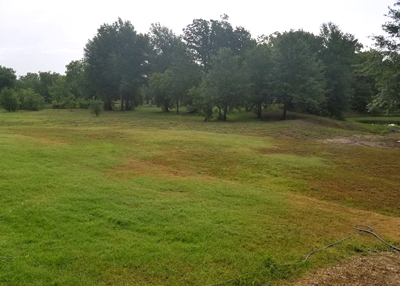
Facebook friend Brian Hammer posted this photo from his North Texas property a week ago wondering what might be causing it to turn suddenly brown.
Because of the photo above and several other questions I’d been asked over a 4-hour period, I sneaked in a warning that armyworms might be on the prowl just before e-gardens went out last Thursday evening. Since then I haven’t had as many questions as I thought I might, but let me be preemptive on this one – because it’s their time. Let’s address how you can watch for armyworms and what you might want to do if you do see them in your turf.
Some of the facts…
• Armyworms are an agricultural pest in that they will attack farm fields as well as home lawns.
• They feed on bermuda but not St. Augustine.
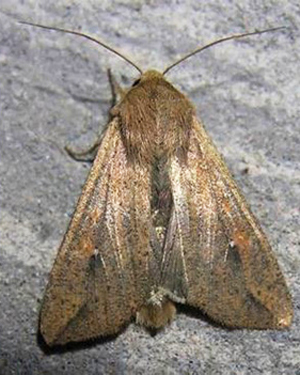
Armyworm moth might not even catch your attention until its eggs hatch and the larvae start to devour your turf.
• The adult is a harmless-looking moth that you might not even have noticed.
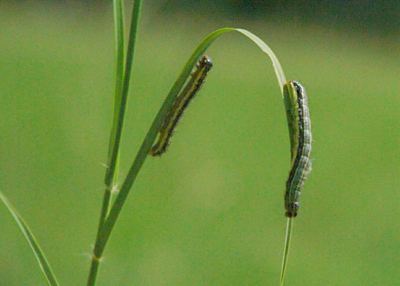
Armyworms are feeding on blades of grass, their favorite food source.
• The chubby larvae are about an inch long, greenish or tan with brown stripes running the lengths of their bodies.
• They feed on grass blades, but they leave runners and roots unaffected.
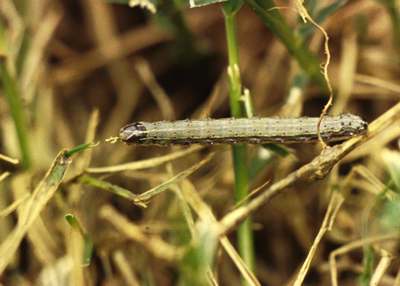
Armyworms have turned this part of bermuda turf completely brown.
• Infested areas quickly turn brown as if dead.
• However, grass rebounds fairly quickly (within a couple of weeks) and greens up again long before winter.
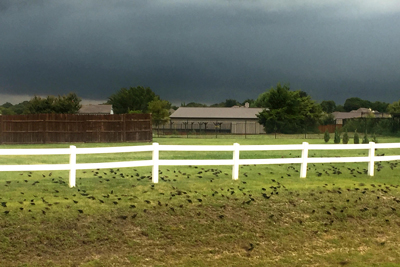
It was an odd scene as hundred of birds fed on thousands of armyworms before this massive storm rolled through our part of North Texas a year or two ago.
• In the meantime you may see hundreds of birds feeding in your lawn – dining on a main course of armyworms.
• See this Texas A&M publication for more information and for suggestions of controls.
